1. Local Implementing Organisations
1.1. UNDP
1.1.1. Key personnel
1.1.1.1. Eric Overvest
1.1.2. Interest
1.2. Danish Refugee Council
1.2.1. Key personnel
1.2.2. Interest
1.2.2.1. Ideal focus: Livelihoods Improvements
1.3. UNHCR
1.4. Save the Children
1.4.1. Interest
1.4.1.1. Interested in being implementing partner. Potentially full involvement at a later stage.
1.4.1.2. Leadership programmes
1.4.1.2.1. could be part of the training programme after a first cohort
1.4.1.3. Education focus
1.4.2. Context
1.4.3. Key Questions:
1.4.3.1. What are the key impacts if Save the Children gets involved?
1.4.3.2. What constraints are there due to strong curricular focus?
1.4.3.2.1. None as it seems
1.5. USAID
1.5.1. Interest
1.5.1.1. Basic Skills Training
1.5.1.2. Lots of low cost equipment
1.5.1.2.1. 100 tablets
1.5.2. Programmes:
1.5.2.1. ForUS
2. Location
2.1. Urban
2.2. Settlement
3. UNHCR Geneva
3.1. Key personnel
3.1.1. Steven Corliss | Director of Support
3.1.2. Betsy Greve | Head of Office at UNHCR
3.1.3. Jakob Oster Associate | Livelihoods Officer
3.1.4. Ziad | Head of Livelihoods
3.2. Interest
3.2.1. UNHCR Exchange training intervention
3.2.2. UNHCR Exchange as an inter agency collaboration tool for communities of practice
3.2.2.1. Communities of Practice
3.2.2.1.1. Creation and collaboration challenges
3.2.2.2. Communities of Interest
3.2.2.2.1. Content creation challenges
4. Research Stakeholders
4.1. NYU
4.2. University of Illinois
4.3. University of Denver
4.4. Columbia University
5. Content
5.1. Corporate
5.1.1. Microsoft
5.1.1.1. Status
5.1.1.1.1. Already want to be Exchange partners
5.1.1.1.2. Want to implement Microsoft MixIT
5.1.1.1.3. Have lots of ICT Content
5.1.2. Cisco
5.1.3. sony ericsson
5.1.4. Google
5.1.5. HP
5.1.5.1. Status
5.1.5.1.1. Already have HP Life, partners of UNHCR Exchange
5.2. Training Sector
5.2.1. PERA: Functional Skills
5.2.2. OCR Computing
5.3. OER
5.3.1. Humanitarian Sector
5.3.1.1. Warchild
5.3.1.2. USAID
5.3.1.3. Save the Children
5.3.1.4. Commonwealth of Learning
5.3.1.5. British Council
6. Identifying the trainers
6.1. Previous programmes run by INGOs might be able to provide contacts
6.2. difference between Urban and Settlement/camp environment
6.3. relevant: Mix of cohort
6.4. Local Tech entrepreneurs
6.5. Gender balance between the trainers? Should it be mixed trainer gender in the sessions?
7. Participant Selection Criteria
7.1. we need to consider the existing gender balance and define what our role is within that?
8. Identifying the Remote Tutors
9. Methodology Partners
10. Equipment
10.1. More innovative equipment in the future
10.1.1. MIT
10.1.2. Libraries without Border
10.1.3. Cybersmart
10.2. Main Equipment Choice
10.2.1. Raspberry Pies
10.2.1.1. Kebyboard
10.2.1.2. Cables
10.2.1.3. Monitor
10.2.2. Google Android Device
10.2.2.1. notebook like / Chromebook
10.2.2.2. Tablet
11. Local Labour Market opportunities, apprenticeships
11.1. Apprenticeship opportunities
11.2. TELCOM
11.2.1. no networking
11.2.2. SONY Erikkson
11.2.3. CISCO
11.3. Tech companies
11.3.1. Microsoft
11.3.1.1. Status
11.3.1.1.1. Already want to be Exchange partners
11.3.1.1.2. Want to implement Microsoft MixIT
11.3.1.1.3. Have lots of ICT Content
11.3.2. Cisco
12. Tech development needed
12.1. Offline App
12.1.1. Read in Devices
12.2. App localisation
12.3. Coding API
12.4. Custom App
12.4.1. onboarding experience
13. Expansion opportunities
13.1. Innovation Lab in Camp
13.2. Girls tutorship programme
13.3. Online Delivery Scaling
14. Pedagogy
14.1. Learning Path
14.1.1. Interaction points
14.1.2. Level of interactivity
14.1.3. Learning Styles
14.2. Core Skills
14.2.1. Entrepreneurship
14.2.2. Employability
14.2.2.1. Private less popular than in the government sector
14.2.2.2. What are the key employability skills for the government sector?
14.2.2.3. IDPs vs refugees and their needs
14.3. Learning objectives and Outcomes
14.3.1. Community Leadership
14.4. Alternative Curriculum and Learning plans for self learners
14.4.1. Cohort participants could become advocates for the free autonomous learning offering offered in parallel for those who can use their smartphone to access the app
15. RISK Management
15.1. What is the relationship between IPDs and refugees in the settlement and urban environment?
15.1.1. Concepts of intercultural, integrative collaboration are key
15.2. Connectivity
16. KPIs
16.1. Employment
16.2. Direct transition into Employment after assessment and certification
16.3. Nr of Participants who become self reliant
17. Contracts / Paying Contractors
17.1. Alternative 1: Direct payment, treating all traiers and lead practitioner as consultants
17.1.1. Responsbility
17.2. Alternative 2: Local Organisation
17.2.1. Mechanism for control

